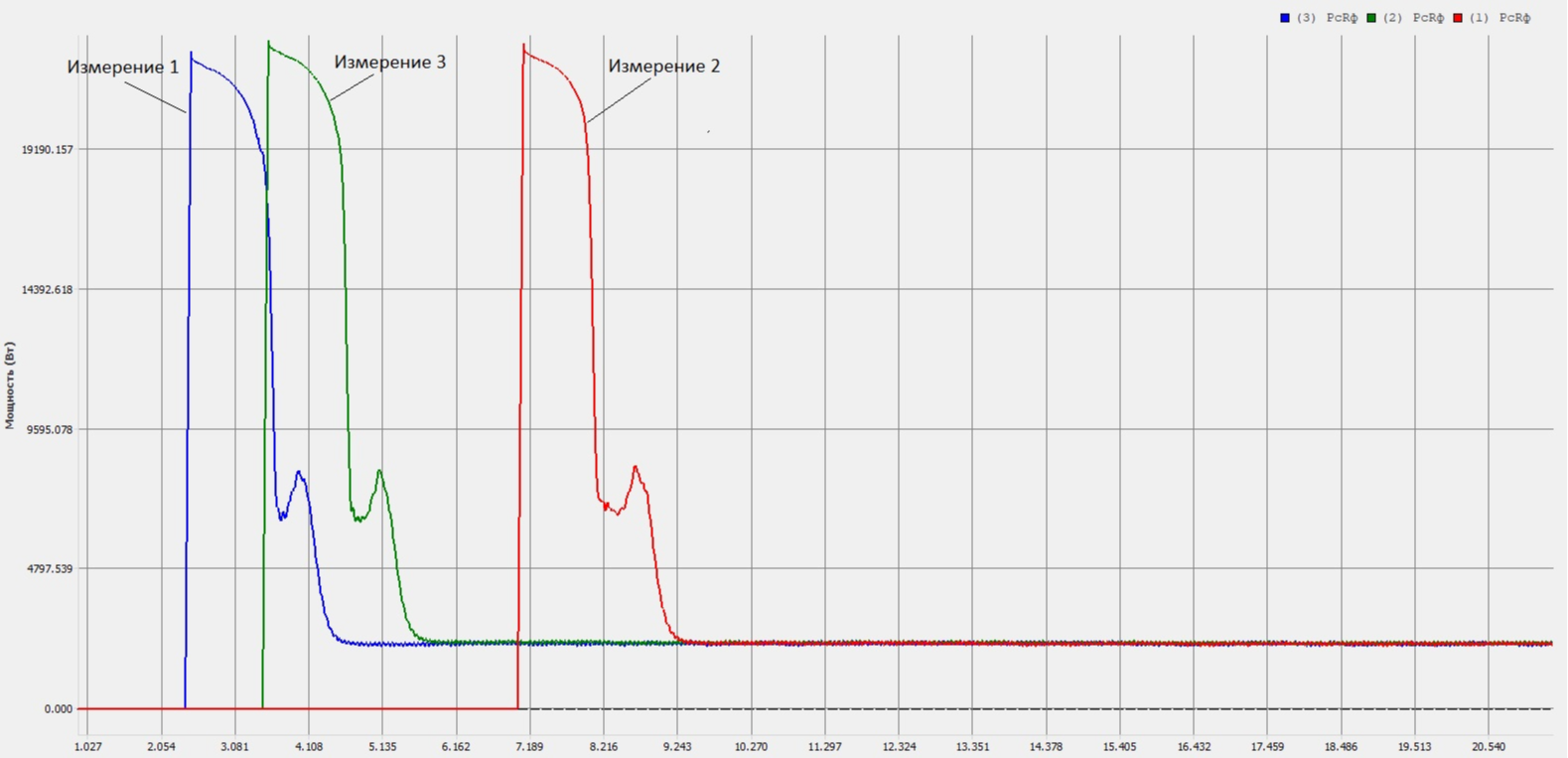Influence of the imbalance of the ventilation unit with vibration isolators on the power consumption
My colleagues and I decided to conduct an experiment and determine the effect of imbalance on power consumption. A double-sided intake fan with a belt drive with vibration dampers was chosen as a test subject.

Electric motor power 5.5 kW, engine speed 3000 rpm, fan speed 2800 rpm. Vibration measurements were carried out on the following supports: support 1 - electric motor from the blowing impeller side, support 2 - electric motor from the pulley side, support 3 - fan bearing from the pulley side, support 4 - fan bearing from the free side of the rotor. Directions of measurements: V - vertical, H - horizontal, A - axial.
From the point of view of comparing the obtained data, we are more interested in the vibration and active power measurements of three starts - the initial state, an intermediate start with a test load, and the final start after balancing.
Measurement 1. Initial vibration (RMS vibration velocity, mm / s):
Measurement 2. Vibration after (erroneous) installation of a test weight (RMS vibration velocity, mm / s):
Measurement 3. Vibration after balancing and elimination of resonance in the axial direction (RMS vibration velocity, mm / s):
In accordance with GOST 31350-2007, the tolerance is 6.3 mm / s.
During all starts, the active power of the electric motor was measured by the "SPEKTR-01A" device (LLC "KVALITECH") with a connection to the borno (see photo above). The results were not encouraging to say the least.

It can be seen from the graph that even when measuring 2 with a strong imbalance of tens of mm / s (accompanied by strong extraneous noise from the fan), the active power consumption did not change. With a thorough study of the active power graphs, it was not possible to track any changes in its value. The only change is to improve the smoothness of the motor shaft by 2-2.5% after balancing.
So what is the reason for the lack of a visible decrease in power consumption? After all, energy must be spent on rocking the unit and friction in the bearings. Probably, it's all about the presence of vibration isolators. The low stiffness of the support system promotes high vibration amplitudes even with small imbalances, and the increased flexibility of the supports reduces friction in the bearing units.
In this regard, it is advisable to repeat the experiment on units with a rigid support system, which we will do if possible.
По данной теме хочу поделиться своими впечатлениями о балансировке диска циркулярки.
Как то я был у одного скажем фермера, который купил станок для деревообработки, но столкнулся с тем, что при его работе была огромная вибрация. Пытаясь распустить бревно на доски, его рвало в ошметки, установка прыгала по двору, и в таком же духе прочее непотребство. В итоге он догадался про дисбаланс и каким то чудом нашел меня.
Перед балансировкой виброскорость на моторе была порядка 55 мм/с. При этом на пульте управления ток составлял примерно 9,5 Ампер. И так как установка реально прыгала по двору, то я сначала скинул ремни и чуть уравновесил диск в статике. Стало 21 мм/с и можно было продолжить в динамике. Заказчик оказался дотошным и с 7-го примерно пуска я загнал установку в 1,1-1,2 мм/с, он просил еще снизить, но дальше надо было уже 0,3 грамма ловить, а у меня в то время весы на такие мелкие грузики не были расчитаны. Так вот, отбалансировал я ему станок и он давай торговаться, мол грузы его, время потратил много и прочие аргументы. А я ему в ответ контраргумент - мол смотри, у тебя после балансировки вместо 9,5 Ампер стало 8,5 и стало быть пойдет экономия электричества и денежка которую он пытается недодать отобьется за счет экономии электроэнергии. Увидев, что на него это не очень произвело впечатление, говорю пойдем, проведем эксперимент. Включили установку, на амперметре 8,5 Ампер. Потом я снял самый большой груз, которым балансировал в статике, стало 9,1 Ампер. В итоге изумленный фермер отдал все о чем договаривались.